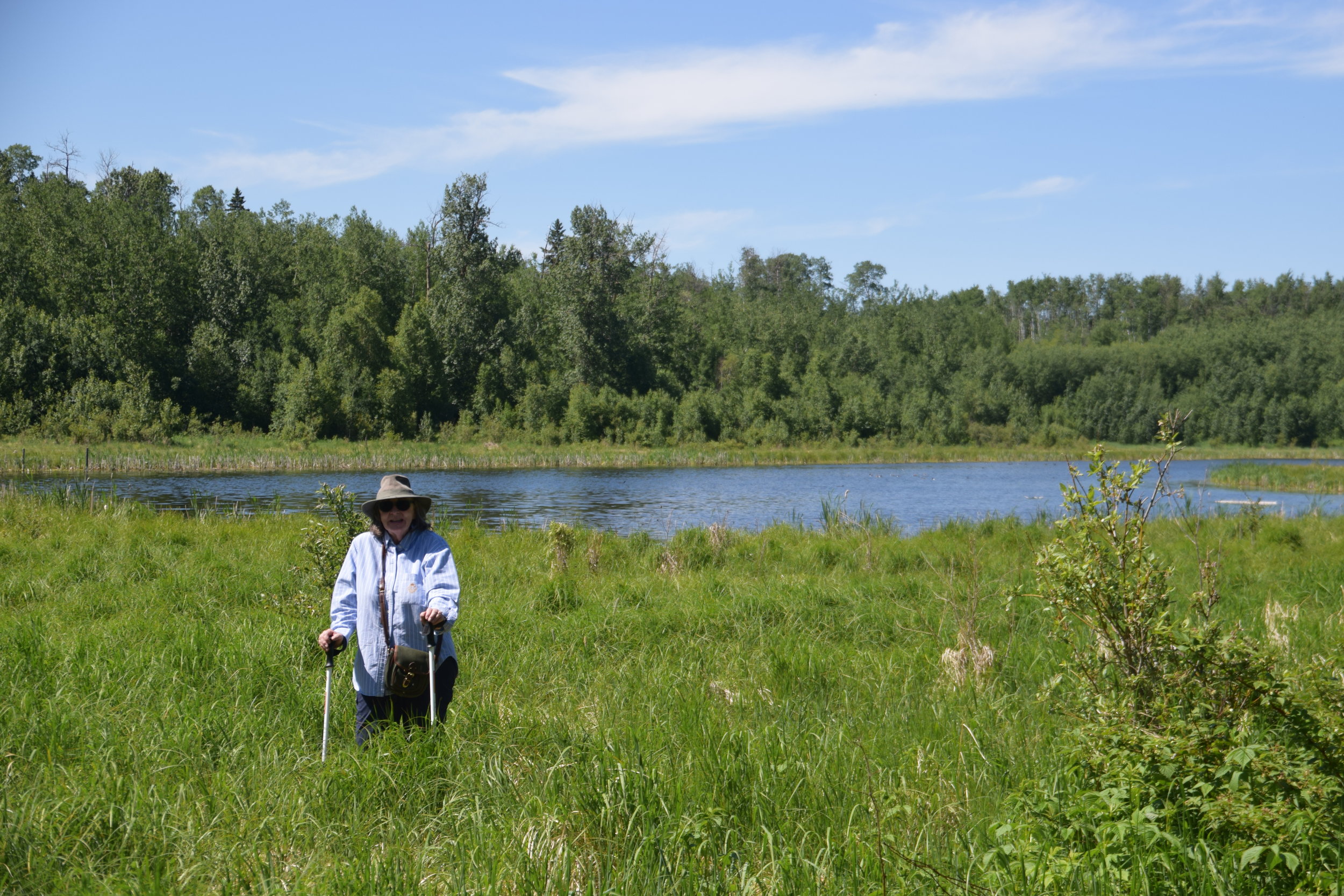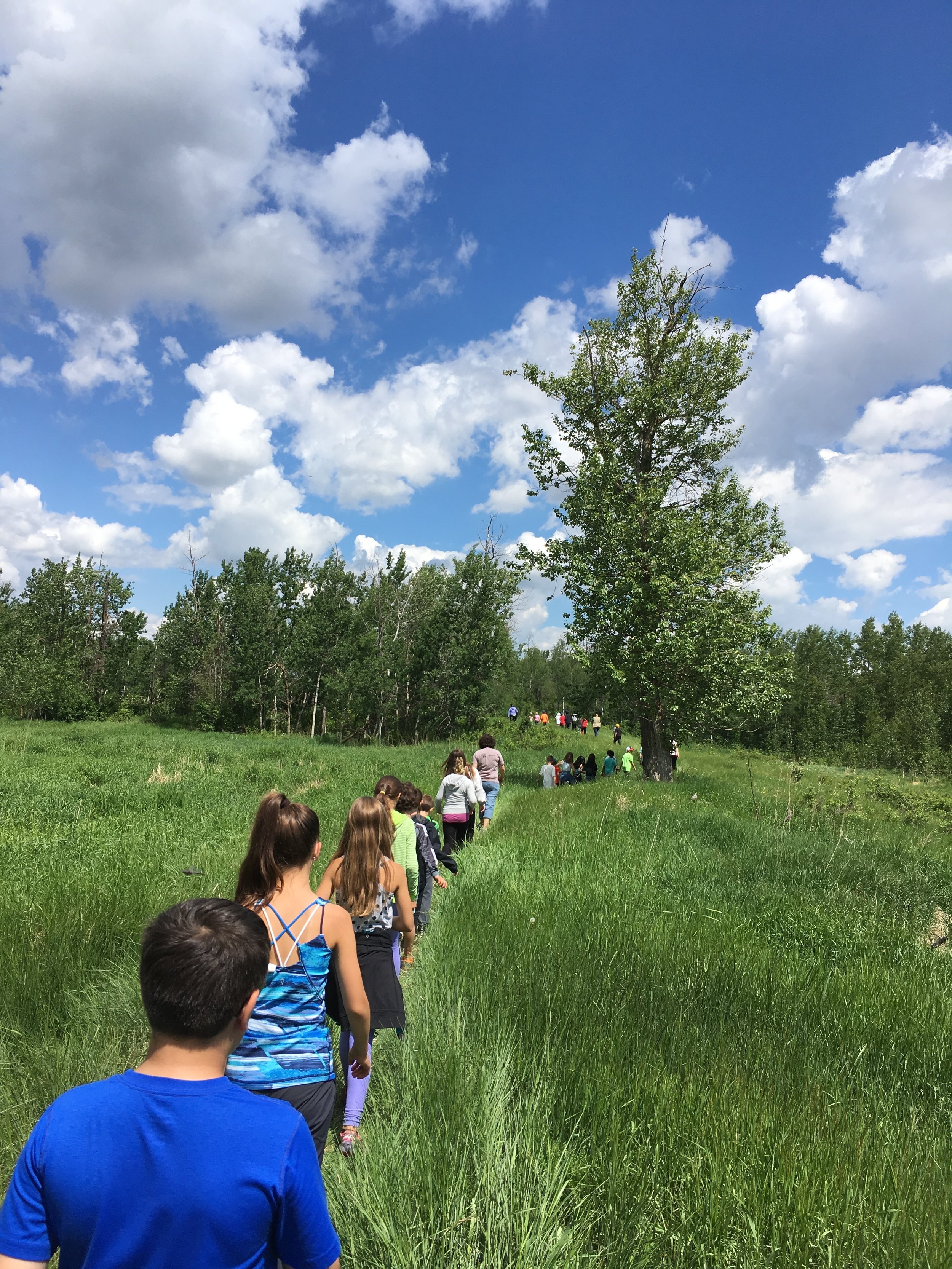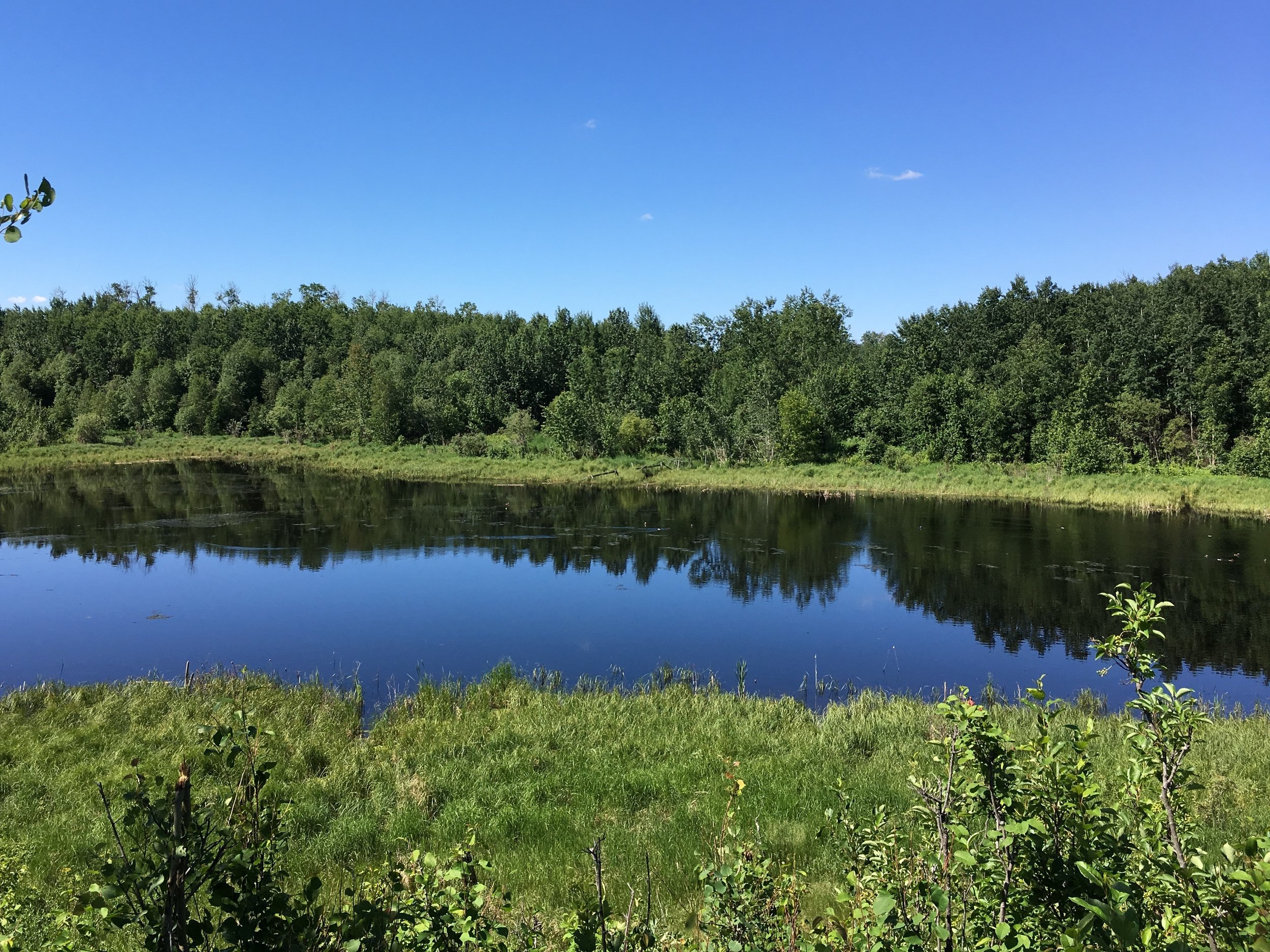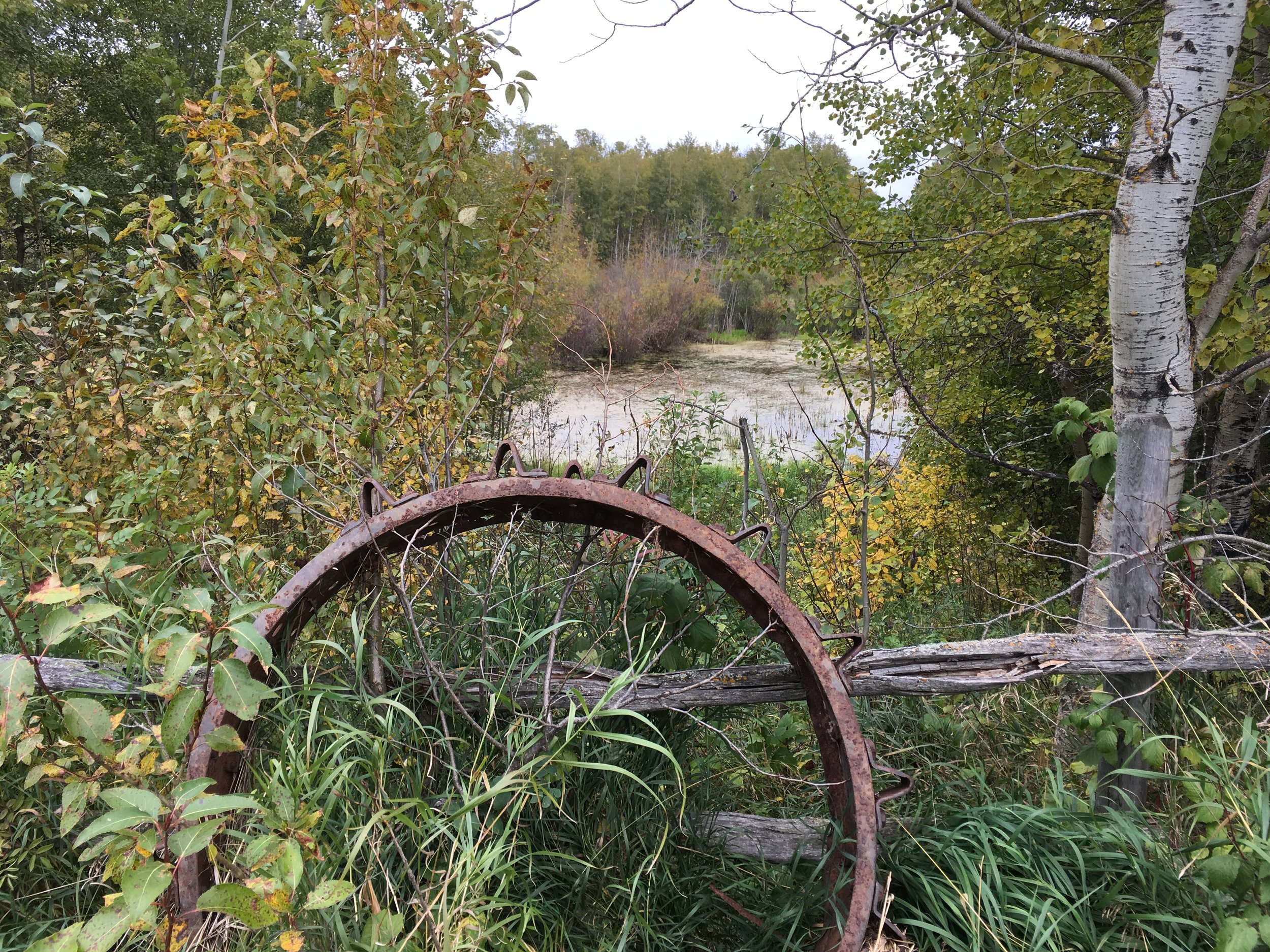Original from Strathcona Bugle, Page 11
By Stephanie Weizenbach, Outreach Coordinator
Edmonton and Area Land Trust
December 20, 2018
The Edmonton and Area Land Trust (EALT) received a wild gift in their 10th Anniversary year: almost 80 acres of wilderness! This brings the EALT’s natural areas to over 2,240 acres of conserved land, across 12 locations, in 9 municipalities in and around Edmonton. An astounding accomplishment for a 10 year old non-profit in this Central Parkland region which has the least remaining percentage of native habitat in any Alberta ecoregion (only ½ of 1% of Central Parkland remains natural).
Who is behind the wild gift?
This natural oasis recently came up for sale, catching Donna's eye. The land was first homesteaded by her widowed grandmother in the early 1900s, then lived on by her uncle, and it belonged in her family until 1989. As a child, Donna formed a connection with nature on the land, taking walks along the winding trails with her father. On long walks he shared his appreciation of the natural world with his daughter Donna Lynn, and recalled the experiences of his childhood as happy and fortunate, despite the destitution the family endured. When the land was advertised for sale, she was delighted to find it substantially the same as it had been in her early years.
Because of her fond childhood memories of the place and its family history, she felt the land deserved to be conserved forever. So she decided to purchase this old homestead, and gift it to EALT to steward forever, in honour of the land’s conservation values, her family’s endeavours, and her late husband.
What Makes this Such a Great Gift?
The Smith Blackburn Homestead is located just a couple kilometers east of Elk Island National Park. It is within the Beaverhills Initiative which was recently designated as a UNESCO International Biosphere Reserve. This area of hummocky moraine is a focal point of nature conservation for the government and other agencies. Adding an additional piece of conserved wilderness increases the connectivity within this special region, making it a great place to live – or to travel in – for all wildlife.
This wild land is covered by aspen and poplar forest, with a nourishing raspberry, Saskatoon, and rose bush understorey. The forest is teeming with wildlife including everything from tiny songbirds to lumbering moose, and there is a lake with cattails for the ducks and great blue herons.
The varied habitat in this region sustains a high diversity of rare species and globally significant concentrations of migratory birds. It is a vital component of freshwater health for the region, and provides wetland breeding grounds for many species of North American waterfowl, making EALT’s work in this area vital in many ways.





When Can Visitors Enjoy this Gift?
In addition to conserving high quality habitat for all kinds of wildlife, the property will open to the public in 2019. It will serve as a place that local and regional residents can visit to connect with nature. Visitors can walk the trails that were originally formed on the land by deer and moose, or sit and listen to the leaves rustling in the wind while the songbirds whistle their tunes. They might even glimpse one of the wild residents while taking in the surroundings. Check out EALT’s website at www.ealt.ca to see the other conservation lands to visit for a similar connection with nurturing nature!
Quotes
““The Edmonton and Area Land Trust admires Donna’s dedication to conservation and desire to honour her family history through the permanent conservation of this precious land. The location has huge connectivity values, as well as being rich in biodiversity. But in contrast with other EALT lands, it is imbued with history which will create added enjoyment to visitors, as they catch glimpses of old binders, rakes, or other implements standing in the long grass, and representing Alberta’s early homesteading heritage. We are excited to welcome the public onto this special site and want to encourage people to get outdoors, connect with nature, and see for themselves why such projects as the Smith Homestead is so important for conservation.””
““We are pleased that Cec will be remembered in association with this precious piece of land, and he would be pleased that it is being preserved so that present and future generations can walk here to learn the lessons of nature and experience the solace and inspiration that it affords.” ”
Edmonton and Area Land Trust (EALT)
EALT works to protect natural areas to benefit wildlife and people, and to conserve biodiversity and all nature’s values, for everyone, forever. EALT stewards these special places with volunteers and neighbours, who are critical to conservation work, and EALT educates the public to protect nature for future generations.
Celebrating 10 Years of Conservation
Thanks to the support of the wider Edmonton community, EALT has had 10 successful years of conserving natural areas. Early in 2018, EALT announced the securement of their 10th natural area, and within the year have secured two more lands, bringing the total number of conservation lands to 12!

